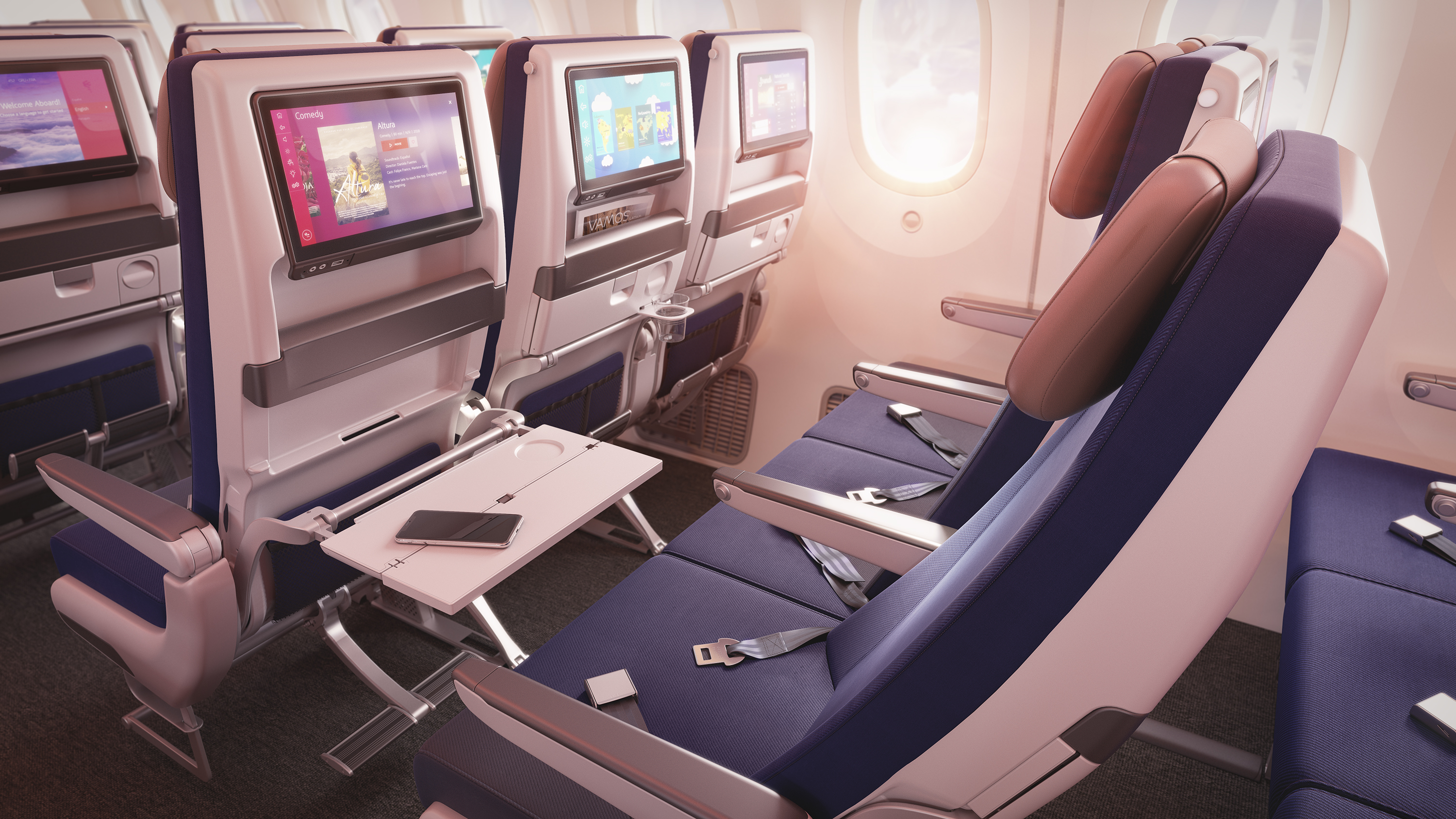Over the past three years, LATAM has launched 67 new routes. In 2018 alone, LATAM has inaugurated services to new international destinations including Costa Rica, Boston, Las Vegas, Rome, Lisbon and just last month adding flights to Tel Aviv. Its international footprint will grow further in 2019 with Munich (from Jun-2019) among its new destinations.
This year will be an important one for the carrier as it brings a new onboard offer to market four years since a standardised interior was adopted following the merger of LAN Airlines and TAM Airlines. In Aug-2018, the company revealed the USD400 programme to revamp the interior of more than 200 narrowbody and widebody aircraft over the next two years, around two thirds of its total fleet.
It has now released a new virtual video tour offering customers a glimpse of its new cabin design. The video tour of LATAM's flagship Boeing 787-9 aircraft showcases the revamped interiors and new premium business cabin of its long-haul aircraft, which will operate flights between South America and destinations in Europe, North America, Africa, Asia and Oceania. It is sure to grab the attention of corporate travellers flying in those markets.
Although it was originally thought that the new product would debut with its Peruvian operation in late 2018, the renovated design will now start to appear in aircraft with LATAM Airlines Peru and LATAM Airlines Brazil in early 2019 and with LATAM Airlines Chile from the second half of 2019.
"Our new cabins will enable us to offer an industry-leading onboard experience with more options, flexibility and personalisation to better serve each and every passenger," says Claudia Sender, vice president customers, LATAM Airlines Group.
She describes the premium business cabin as offering "unrivalled comfort, privacy and a new service concept to enable passengers to arrive at their destinations well-rested and ready to continue their journey". At the same time, the new economy cabin will offer passengers "greater comfort as well as more options to upgrade services and tailor their travel experience," she says.
LATAM's new premium business cabin will be gradually introduced to the airline group's long-haul (widebody) fleet, including current Boeing 767 and Boeing 777 aircraft and new Boeing 787-9s and Airbus A350-1000s due for delivery. It will include the "Wide Thompson" seat from Thompson Aero that reclines to a fully-flat position, while offering direct aisle access and an 18-inch inflight personal screen.

Meanwhile, the economy cabin will be fitted with Reacro seats and provide USB power ports to charge devices and a 12-inch inflight entertainment screen. Passengers in economy will also have the option to upgrade to LATAM+ Seats, offering more space, reclining seats and premium services such as priority check-in and boarding.
For passengers travelling on domestic flights and routes within Latin America, LATAM is also modernising the cabins of over 150 Airbus A320 and A321 aircraft. The cabins will feature LATAM Play in-flight entertainment as well as ergonomically designed Recaro seats, featuring fast-charging USB power ports.
Offering a standardised product is important for airlines, especially for its corporate travellers, and LATAM has struggled to offer this after standardising its interior as part of the LAN and TAM integration and more recently having source third party capacity to overcome the grounding of its Boeing 787 Dreamliner fleet due to ongoing engine issues.